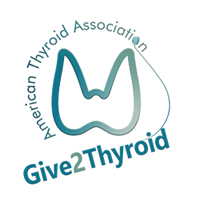SUMMARY OF THE STUDY
The Hypothyroidism Treatment Survey was created by the program committee members of the Satellite Symposium on Hypothyroidism that was held in the spring of 2017, a meeting organized by the American Thyroid Association. In the two months before the symposium, patients with hypothyroidism were invited to complete the online survey with the intent to disseminate its results at the meeting. The survey was posted on the ATA website, emailed to patients in the ATA database, distributed to members of the ATA Alliance for Thyroid Patient Education, and further distributed on the websites and social media of multiple patient advocacy groups.
Respondents were asked to provide demographic data and types of treatment used (L-T4 monotherapy, L-T4+L-T3 combination therapy, DTE, other supplements). Patients were asked to rank satisfaction with their treatment for hypothyroidism and their treating physician. They also ranked their perception regarding physician knowledge about hypothyroidism treatments, need for new treatments, and life impact of hypothyroidism on a scale of 1 to 10. Additional questions included the number of times they changed physicians due to unsatisfactory treatment of their hypothyroidism, aspects of their life affected by hypothyroidism, and attempts to seek alternative forms of hypothyroidism treatment.
A total of 12,146 individuals completed the survey. The vast majority of patients gave a score of 10 on a scale of 1-10 as to how hypothyroidism has affected their life. Overall degree of satisfaction with their therapy was rated a 5. Among the 3,670 individuals who did not report depression, stressors or medical conditions, those taking DTE reported an average treatment satisfaction score of 7, followed by the L-T4 + L-T3 combination therapy treatment group with a satisfaction score of 6 and the L-T4 monotherapy treatment group with a satisfaction score of 5. Patients taking DTE were also less likely to report problems with weight management, fatigue/energy levels, mood, and memory, compared to those taking L-T4 monotherapy or L-T4 + L-T3 combination therapy. All patients gave a score of 10 to the need for new therapeutic options for hypothyroidism.
WHAT ARE THE IMPLICATIONS OF THIS STUDY?
In summary, some patients with hypothyroidism are not satisfied with their current therapy, or with their physicians. Higher satisfaction with both treatment and physicians was reported by those patients taking DTE. While the way our study was designed does not allow us to provide an explanation for this observation, future studies should investigate whether preference for DTE is related to T3 levels in the blood or other unidentified causes.
There is a distinct subset of individuals with hypothyroidism who are dissatisfied with their thyroid hormone replacement therapy and managing physicians. Compared to patients taking LT4 or LT4+LT3, those taking DTE were generally more satisfied. The reasons for the high dissatisfaction rates, particularly among individuals taking LT4 monotherapy, are unclear and deserves further investigation. The vast majority of patients surveyed expressed a strong desire for the development of additional hypothyroidism treatment options.
— Sarah Peterson, MD, Chicago, IL




